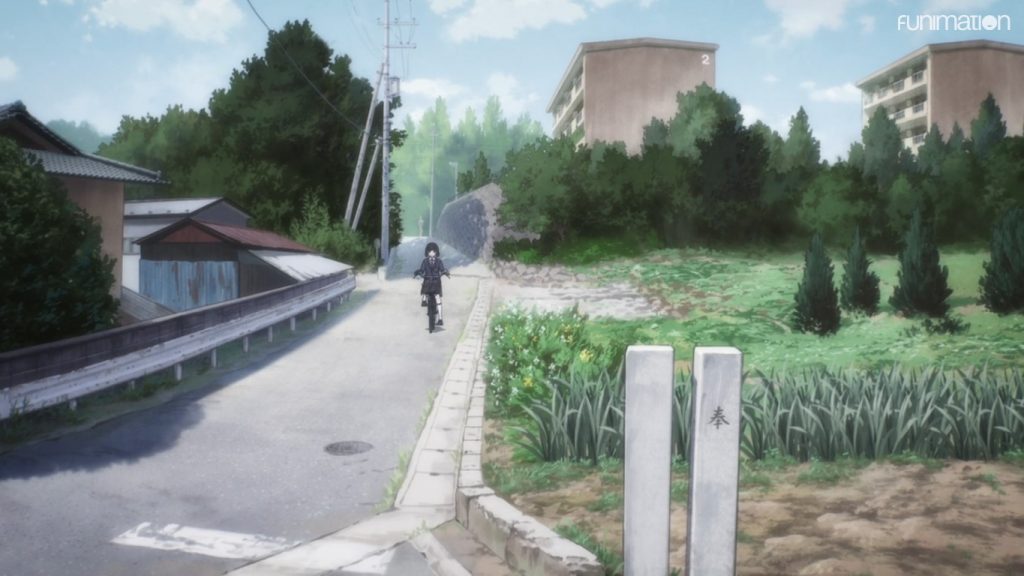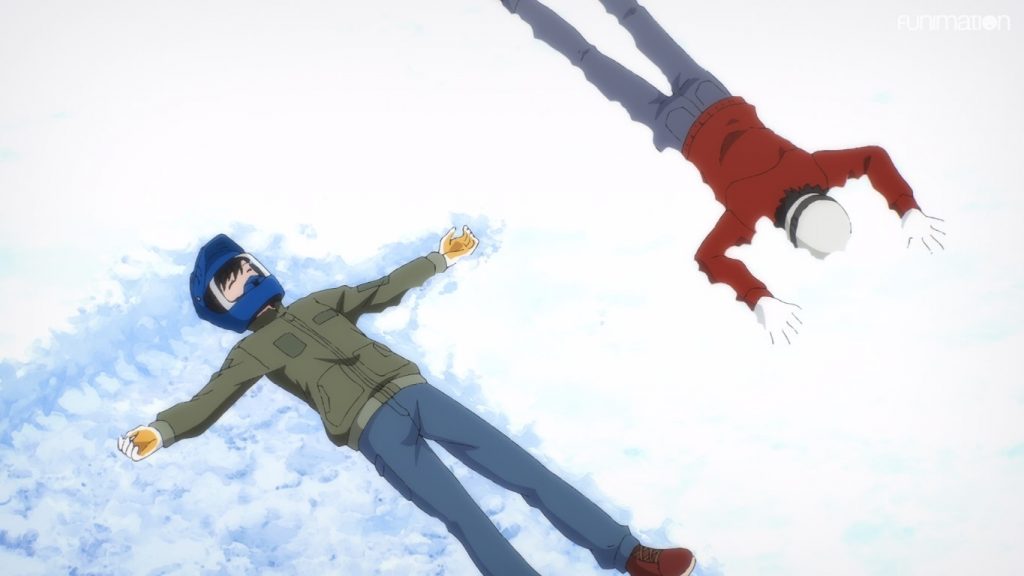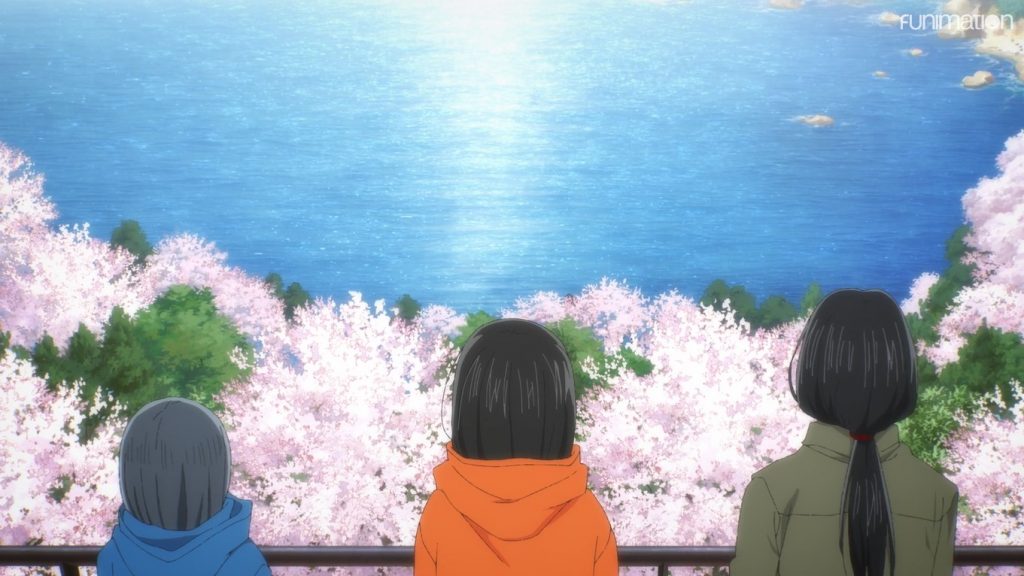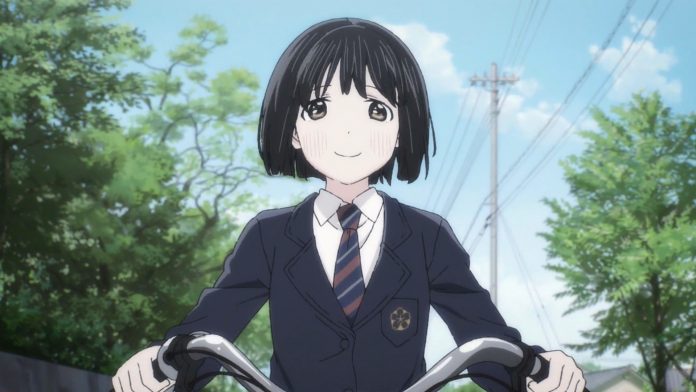The Girl With Nothing
At base, Super Cub is the story of Koguma, a girl who has nothing. No parents, no friends, no hobbies, and a wholly empty life. That is, until she buys a heavily discounted Honda Super Cub, the titular bike, and her newest companion. It immediately opens up her world, allowing her a small degree of adventure in her otherwise bland life.
This serves as the foundation for the anime, slowly evolving as Koguma makes friends with two fellow classmates through their shared interest in motorbikes.
The execution of these friendships aren’t always perfect, but what it is is realistic.They lean heavily on how genuine, Japanese teens interact to create a thoughtful trio of girls who spend more time helping one another than fighting. By showing them as genuine friends and supportive young women, the showavoids the unnecessary mess of cattiness, jealousy, and ultimately, any negative vibes as they just lean on each other and enjoy a year together. Even when the plot takes a step back so the girls can just be kids with nifty bikes, Super Cub remains strong enough that most viewers won’t lament any loss of quality, or handwaved plot bits.

Effective Animation and Color Design
Desaturated, earthy colors fill Koguma’s small world, a hallmark of her depression, which she copes with throughout the show. However, in particularly emotional moments, the world turns to lush, saturated tones: warm, rich colors that represent an emotional change in her, whether that’s elation or worry. The animation matches this as well, becoming a little less sketch as the music picks up, losing a bit of its melancholy in the wake of Koguma’s feelings.
This use of dynamic color design continues through most of the series, and by the time we’ve reached the finale, almost everything is in full color. It matches Koguma’s thoughts and perspective, which make sense: we’re very in Koguma’s head for most of the series, with the proverbial camera pulling back just a little in very specific, really important instances.
This is all helped by Super Cub’s charming, sketchy-style animation. While not always accurate or even technically impressive, the art still fleshes out Koguma and her world with a certain softness that helps convey the heart of the story.

The Sounds of the Countryside and Liminal Space
The story is set for the most part in the rural city of Hokuto, which is located in Yamanashi Prefecture. It’s a quiet place that I know for two things: Mount Fuji and Laid-Back Camp. A refreshing change of pace from anime set in Tokyo or other big cities, Hokuto has a rich tapestry of sounds that most anime obscure by the hum and buzz of the city, bringing the sonically pleasant sound of the countryside to the forefront.
Often, the music drops out, but just as frequently it leans into flutes, strings, and piano to convey additional emotion,making for a really peaceful, calming soundtrack. Altogether, these sounds also work to build liminal space, creating a physical space between moments like transitioning from a dark room to outside in the sun. These spaces create a canvas of sorts for Koguma’s story to be told on, often without words.
Ultimately, it’s the sounds of Hokuto that fill in the space and let Koguma’s facial expressions and actions tell the story of her moving through her depression. Evocative, emotional, and thoughtful: those are three words that can easily describe what the show conveys.

The Power of Friendship in Super Cub
While Koguma’s struggles with depression are always at the forefront, so is her relationships with Reiko and Shii, two second-year students that she befriends via her Super Cub. It’s nice to see a series take female friendship seriously. Super Cub also conveys the power of supportive friendships, either through Koguma and Reiko riding around Hokuto as they prepare to winterize their cubs, or the trio visiting Shii’s family cafe. And while Shii’s friendship comes in the back half of the series, it’s just as strong as Koguma’s friendship with Reiko, which starts early on.
This support peaks with their trip to the most southern part of Japan, Kagoshima Prefecture, in order to see the coming of spring and the cherry blossoms. It feels like the culmination of weeks of character studies and character growth, resulting in a genuinely emotional climax and resolution that’s sure to pull a few tears from anyone who watches.
Take Your Time, Enjoy the Ride
In the end, I really loved Super Cub, and I encourage fans of the “cute girls doing cute things” sub-genre of slice-of-life to sit down with Super Cub. It’s especially impactful for the teenage girl audience who can easily relate to our three stars. The series is a celebration of mundane delights, and relishes in the everyday moments like not getting rained on, playing in the snow, eating a train station bento, and seeing the seasons change. It magnifies the ordinary, making it extraordinary by virtue of celebrating the small things that often feel grand.
But don’t rush your watch: while Super Cub is bingeable, it’s better enjoyed over a period. So consider stretching your viewing over a month, if only to sit with one of the most thoughtful and well animated stories from this year.
Super Cub is available now on Funimation!
Studio: Studio KAI
Director: Toshiro Fujii
Series Composition & Script: Toshizo Nemoto
Music: Tomohisa Ishikawa & ZAQ
Character Design: Toru Imanishi
Original Creator: Tone Koken
Original Character Design: Hiro







